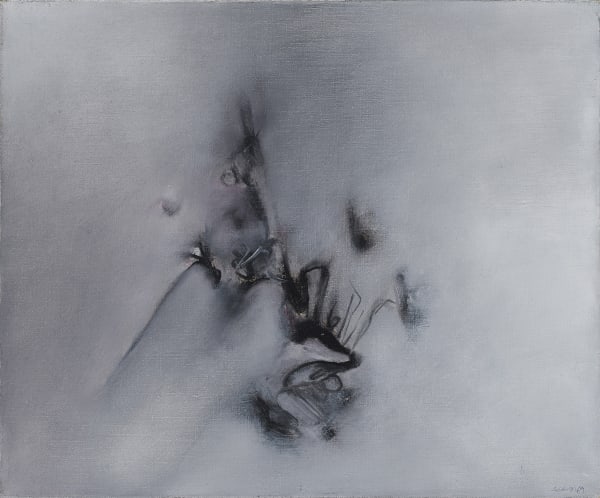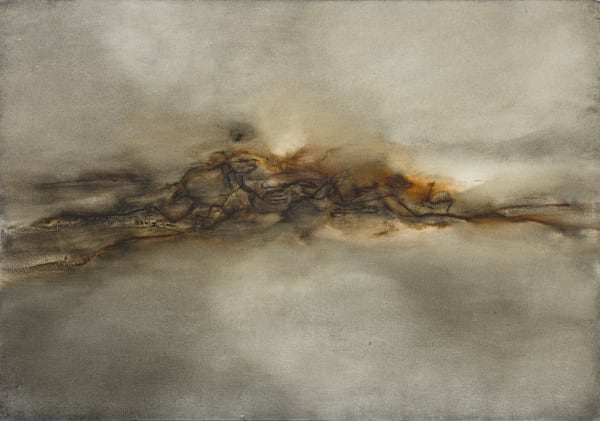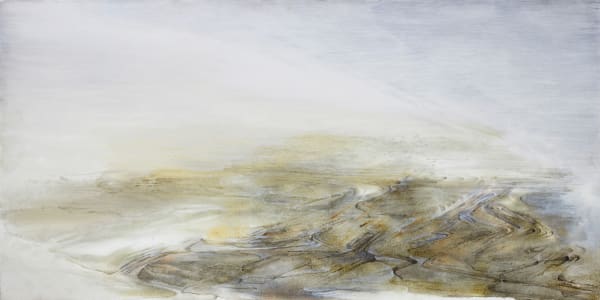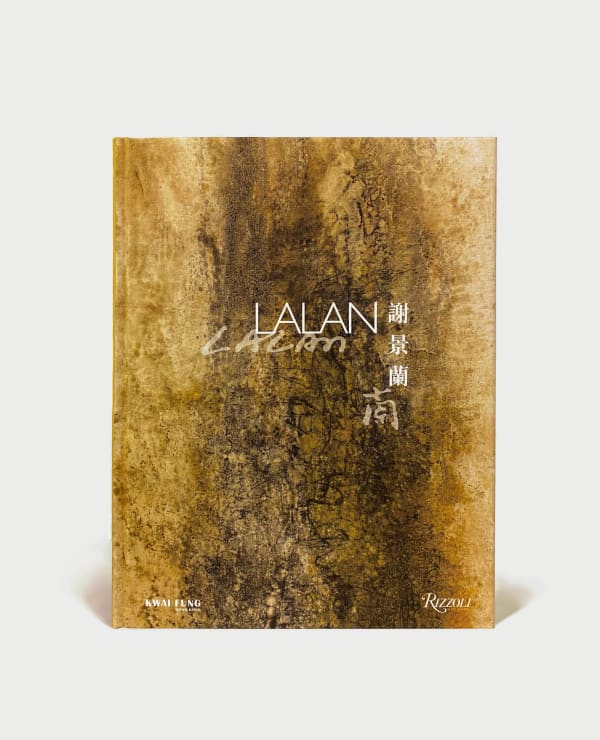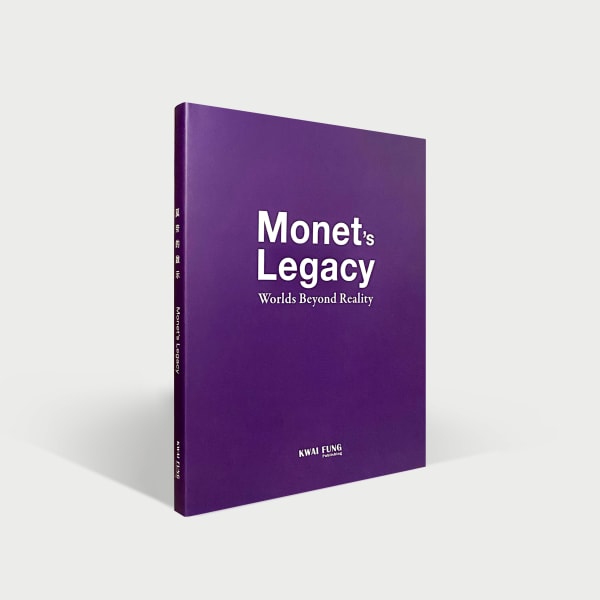Lalan 謝景蘭 1921-1995
The French-Chinese multidisciplinary artist Xie Jing-Lan, known as Lalan, was an accomplished painter, poet, musician and dancer whose avant-garde "integrated art" infused the cultures of the East and West. Inspired by teacher and painter Lin Fengmian, Lalan moved to Paris in 1948 with her first husband, the Chinese modernist painter Zao Wou-Ki, but did not pick up a paintbrush until after their divorce in 1957. Freed from the simplistic label of 'muse', Lalan's pioneering and highly experimental oeuvre was influenced by her singular background as a trained composer and soprano singer, and her willingness to explore new forms of artistic expression such as electronic music and modern dance, which she synthesised with her paintings into performative "Spectacles".
Xie Jinglan, nicknamed Lanlan, was born in Guizhou, China in 1921 to a scholarly family. Her grandfather was a famous intellectual and her father a traditional Chinese literati who encouraged his young daughter's gift for music. Aged seven, she and her family moved to Shanghai and soon thereafter to Hangzhou. In 1937 she entered the Music Department of the Hangzhou School of Art. During her time in Hangzhou, Xie was introduced by her cousin to Zao Wou-Ki. In 1941 they got married in Hong Kong, and in 1948 the couple travelled to Paris to begin their next phase of life together.
Finding themselves at the centre of the art world in the late 1940s, the couple quickly became enamoured with the city's artistic metropolis and world-famous museums. Settling into a studio in Montparnasse where their neighbours included the Swiss artist Alberto Giacometti, they befriended fellow artists such as Sanyu, Georges Mathieu and Pierre Soulages, as well as the poet Henri Michaux who would became pivotal to Xie and Zao's artistic development.
While Zao's painting career gained momentum, Xie continued to pursue her passion for music, studying musical composition at the Conservatoire National Supérieur de Musique et de Danse de Paris, and later modern dance at the American Cultural Centre after watching a documentary on Martha Graham. Henri Michaux introduced her to the distinguished avant-garde American-French electronic composer Edgard Varèse, whose theories about the affinities between music and image followed a direction that would later inspire much of Lalan's artistic practice.
In 1957, Xie Jinglan divorced Zao Wou-Ki and moved to St. Ouen, a commune in the northern suburbs of Paris. A year later she married Marcel Van Thienen, a French musician, and changed her name to Lalan. Opening a box of watercolours gifted to her from her new husband, she started a new life as an artist, dedicating herself to painting, music, dance and poetry. Lalan's intuitive artistic vision and freedom of self-expression were the building blocks of a brilliant oeuvre that came to an end when a tragic car accident took her life in 1995. Her works are collected by the Culture Ministry of France, the Musée d'Art Moderne de la Ville de Paris, the Shanghai Art Museum, the Macau Museum of Art, etc.
-
 Untitled《無題》, 1958-1959
Untitled《無題》, 1958-1959 -
 Untitled《無題》, 1960
Untitled《無題》, 1960 -
 Untitled《無題》, 1960s
Untitled《無題》, 1960s -
 Untitled《無題》, 1967
Untitled《無題》, 1967 -
 Va avec le vent | Go with the Wind 《隨風飄逝》, 1968
Va avec le vent | Go with the Wind 《隨風飄逝》, 1968 -
 Untitled《無題》, 1968-1970
Untitled《無題》, 1968-1970 -
 L'insecte mangeuse | The Eating Insect 《螳螂》, 1969
L'insecte mangeuse | The Eating Insect 《螳螂》, 1969 -
 Hommage à René Drouin | Homage to René Drouin 《向 René Drouin 致意》, 1969
Hommage à René Drouin | Homage to René Drouin 《向 René Drouin 致意》, 1969 -
 L'automne arrive | Autumn Arrives《秋來》, 1969
L'automne arrive | Autumn Arrives《秋來》, 1969 -
 Untitled《無題》, 1970
Untitled《無題》, 1970 -
 La danseuse | The Dancer 《女舞者》, 1970
La danseuse | The Dancer 《女舞者》, 1970 -
 Untitled《無題》, 1970-1975
Untitled《無題》, 1970-1975 -
 Untitled《無題》, 1970s
Untitled《無題》, 1970s -
 Untitled《無題》, 1972
Untitled《無題》, 1972 -
 Untitled《無題》, 1972-1973
Untitled《無題》, 1972-1973 -
 Printemps | Spring《春》, 1973
Printemps | Spring《春》, 1973 -
 Untitled《無題》, 1973-1979
Untitled《無題》, 1973-1979 -
 Untitled《無題》, 1975-1980
Untitled《無題》, 1975-1980 -
 Deux amis | Two Friends 《雙友》, 1976
Deux amis | Two Friends 《雙友》, 1976 -
 Clair et obscur | Clear and Obscure《清澈與朦朧》, 1979
Clair et obscur | Clear and Obscure《清澈與朦朧》, 1979 -
 Les Rocs Verts | Green Stone《綠石》, 1979
Les Rocs Verts | Green Stone《綠石》, 1979 -
 La montagne doute aussi | The Mountain Doubts Too《山亦疑惑》, 1982
La montagne doute aussi | The Mountain Doubts Too《山亦疑惑》, 1982 -
 Remember Henri Michaux《回憶米修》, 1984
Remember Henri Michaux《回憶米修》, 1984 -
 Remember Henri Michaux《回憶米修》, 1984
Remember Henri Michaux《回憶米修》, 1984 -
 Untitled《無題》, 1986-1988
Untitled《無題》, 1986-1988 -
 Untitled《無題》, 1987
Untitled《無題》, 1987 -
 Untitled《無題》, 1987
Untitled《無題》, 1987 -
 La terre blessée | The Spoiled Land 《赤土千里》, 1990
La terre blessée | The Spoiled Land 《赤土千里》, 1990 -
 Untitled《無題》, 1990s
Untitled《無題》, 1990s -
 Untitled《無題》, 1991
Untitled《無題》, 1991 -
 Untitled《無題》, 1992
Untitled《無題》, 1992 -
 Untitled 《無題》, 1992
Untitled 《無題》, 1992 -
 Untitled《無題》, 1993
Untitled《無題》, 1993 -
 L'hiver | Winter 《冬》, 1994
L'hiver | Winter 《冬》, 1994 -
 La révolte des Mimosas | The Revolt of the Mimosas《金合歡起義》, 1994
La révolte des Mimosas | The Revolt of the Mimosas《金合歡起義》, 1994
Calligraphic Abstract (1957-1969)
In the first phase of her artistic development, Lalan's background as a trained musician and dancer converged with childhood calligraphy lessons and the spirit of French Art Informel in the form of dark and hypnotic monumental abstractions. Her early abstract works introduced symbols and forms inspired by Chinese calligraphy.
But Lalan's gestural application of thick, black calligraphic brushstrokes - executed without reference to any preparatory drafts - conveyed a daring, dancer-like quality, with deeply-felt rhythms and vibrations attesting to Lalan's diverse passions. It was a bold vision that captivated the French art world when Galerie R. Creuze in Paris presented her first solo exhibition in 1960.
Landscape metaphor (1970 -1983)
After 1969, Lalan sought a new artistic language. Undergoing a profound re-examination of her roots, she studied traditional Chinese painting, particularly the dramatic "one corner" compositions of Southern Song Dynasty artists Ma Yuan and Xia Gui, as well as the classic Taoist text Zhuangzi, which ponders the state of "Heaven and Man in unity". Lalan's extensive travels to Europe's famous mountains also provided an opportunity to meditate on the spirit and beauty of nature, and its connection with humanity.
She began to create watercolour paintings on scrolls, and her works changed from highly charged abstract compositions to dreamy landscapes depicting the sun, moon, mist, peaks and rock formations. In 1971, the French Ministry of Culture acquired Lalan's three-paneled masterpiece Sudden Blue, which marked the beginning of Lalan's landscape series. Soft tones of white, yellow, grey and blue suffuse the landscape series, as well as gentle rhythmic lines evoking a latent cosmic energy - a reflection of the artist's enlightened consciousness and introspective approach to life.
In 1971, Lalan began incorporating performance art into her solo exhibitions at Galerie Jacques Desbrières, Galerie Iris Clert and the Centre Culturel Pablo Neruda of the Corbeil-Essonnes. In front of her paintings she performed her own choreographed modern dances accompanied by her original electronic compositions. These unique interdisciplinary "Spectacles" marked the inception of Lalan's "integrated art" (l' art synthèse), and in 1973 the French Ministry of Culture awarded Lalan a special grant in recognition of her work in this field.
Pure inner spirit (1984 -1995)
In the 1980s, Lalan returned to China on several occasions and spent much of her time exploring its museums and natural landscapes. With inspiration rooted deeply in Chinese culture, Lalan's mature works gradually returned to abstraction. Compared to the bold style of her earlier abstractions, which were punctuated with vivid calligraphic lines and symbols, Lalan's later abstract creations were sublime in their portrayal of rhythm and movement. Favouring a palette of lighter hues, her compositions were defined by ultra-fine lines and clustered dapples that synthesised modern dance movements with the staccato rhythms of electronic music through the meditative lens of Chinese qigong. Ignoring trends, Lalan only created what she believed in - a bold and avant-garde vision for a woman of her generation and cultural background. In the words of dramatist Eugène Ionesco:
"It is very rare to witness the existence of an original voice and path, it is very rare to be innovative in non-figurative painting, to find the forceful, discreet yet evident originality that Lalan possesses. There can be nothing new, one is tempted to think, in one domain or another: then all of a sudden here is something new, here is the unexpected, here is a painter, here is Lalan."
-
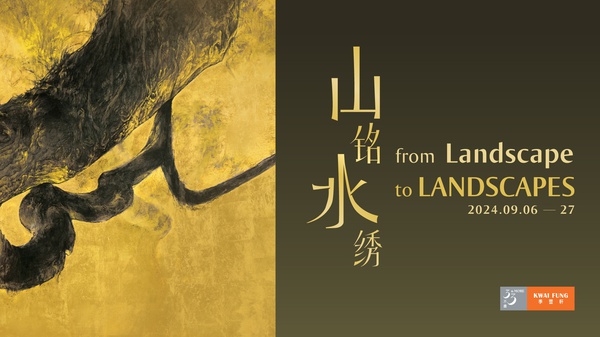
From Landscape to Landscapes
Alliance Française de Singapour 6 - 27 Sep 2024Kwai Fung Hin is pleased to announce its debut exhibition in Singapore, From Landscape to Landscapes, a group exhibition that brings together works by artists...Read more -
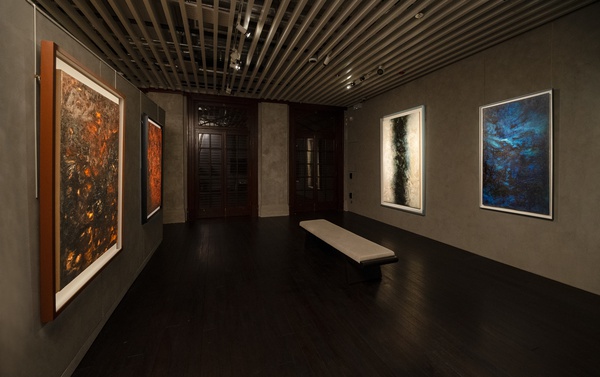
Strokes of Awakening - The Early Works of Lalan
Kwai Fung Hin Art Gallery 5 Mar - 27 Apr 2024Kwai Fung Hin is thrilled to present Strokes of Awakening, an exhibition featuring the early works of French-Chinese artist Xie Jinglan (Lalan,1921-1995). The exhibition sheds...Read more -

Worlds Beyond Reality - Monet's Legacy
Kwai Fung Hin Art Gallery 4 Jan - 18 Apr 2023Claude Monet and the Impressionists opened a new chapter in art history, leading the way for the continuous expansion of imagination by landscapes artists in...Read more -

The Cornerstone
An Exhibition Celebrating the 30th Anniversary of Kwai Fung 14 Jun - 31 Aug 2021Read more -

Extended Figure - The Art and Inspiration of Lalan
Supported by Kwai Fung Foundation; Organised by Asia Society Hong Kong Center 27 Apr - 19 Sep 2021Read more -

Signifiants de l’informel 2020
11/F, Asia One Tower, 8 Fung Yip Street, Chai Wan, Hong Kong 16 Oct - 15 Dec 2020Read more -

Between Dream and Drama - Works of Lalan
Kwai Fung Hin Art Gallery, G/F, 20 Ice House Street, Central, Hong Kong 3 Apr - 2 May 2020Read more -

Rue du Moulin Vert
Kwai Fung Hin Art Gallery, G/F, 20 Ice House Street, Central, Hong Kong 9 May - 16 Jun 2018An exhibition of a collection of the finest works of ZAO Wou-ki, Lalan, Pierre SOULAGES, Nicolas DE STAËL, Sam FRANCIS, Georges MATHIEU, as an associated project of Le French May 2018Read more -

Singing in Colours and Dancing in Ink - Retrospective Exhibition of Lalan (Works of 1958-1994)
Kwai Fung Hin Art Gallery, G/F, 20 Ice House Street, Central, Hong Kong 25 Nov 2016 - 11 Feb 2017Read more
-
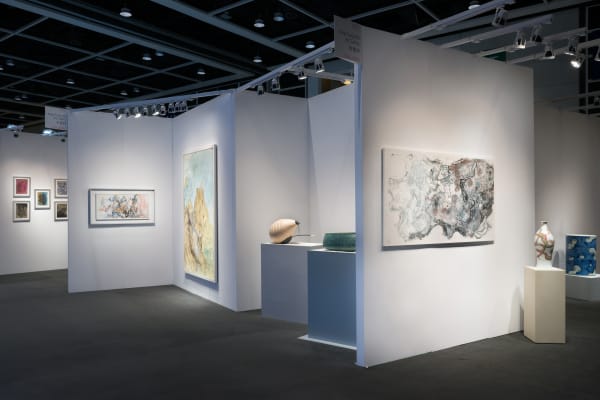
Booth A22丨KWAI FUNG HIN AT FINE ART ASIA 2024
3 - 7 Oct 2024Kwai Fung Hin Art Gallery is delighted to announce its participation at Fine Art Asia 2024 , featuring acclaimed artists Bai Ming, Xie Jinglan (Lalan),...Read more -

Booth C01丨KWAI FUNG HIN AT TOKYO GENDAI 2024
4 - 7 Jul 2024Kwai Fung Hin Art Gallery is thrilled to announce its debut at Tokyo Gendai art fair this year. The gallery will showcase a diverse and...Read more -

Booth BI06 丨 Art SG 2023
11 - 15 Jan 2023Kwai Fung Hin Art Gallery's presentation at ART SG unites eight preeminent artists, Ziad Dalloul, Piero Dorazio, Li Huayi, Lalan, Georges Mathieu, Nicolas Party, Xue Song and Jonas Wood.Read more -

A LIFE BETWEEN DREAM AND DRAMA – Documentary Screening and Panel Discussion
Asia Society Hong Kong Center 15 Oct 2021Read more -

Opportunities for Female Artists - from Lalan to the Current Situation in Hong Kong
Asia Society Hong Kong Center 23 Aug 2021Read more -
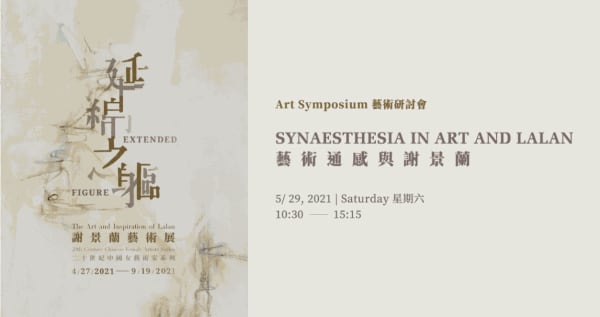
Synaesthesia in Art and Lalan
Asia Society Hong Kong Center 29 May 2021Read more -
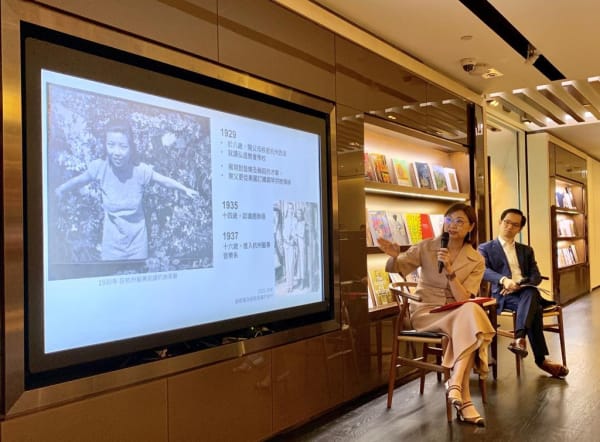
Portrait of Lalan
Sotheby's S|2 Gallery 2 May 2019Read more
-
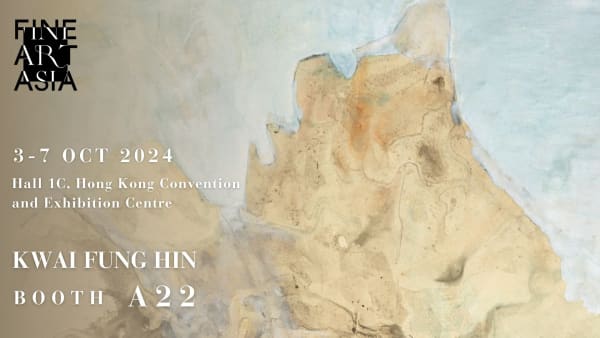
Booth A22丨KWAI FUNG HIN AT FINE ART ASIA 2024
3 - 7 Oct 2024Kwai Fung Hin Art Gallery is delighted to announce its participation at Fine Art Asia 2024 , featuring acclaimed artists Bai Ming, Xie Jinglan (Lalan),...Read more -
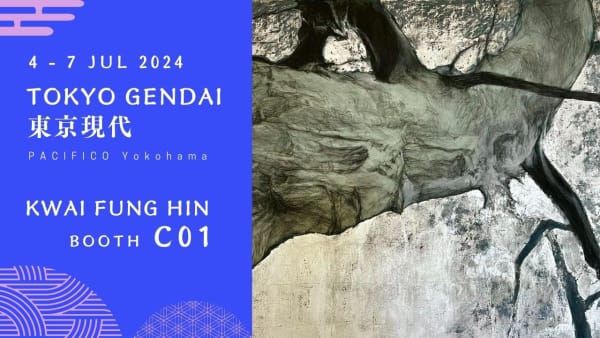
Booth C01丨KWAI FUNG HIN AT TOKYO GENDAI 2024
4 - 7 Jul 2024Kwai Fung Hin Art Gallery is thrilled to announce its debut at Tokyo Gendai art fair this year. The gallery will showcase a diverse and...Read more -

Booth D13 丨 Taipei Dangdai Art & Ideas 2023
11 - 14 May 2023Kwai Fung Hin Art Gallery is delighted to participate in the Taipei Dangdai Art & Ideas for the first time, with a curation of important artworks from gallery's represented artists, demonstrating extensive cultural experiences and global perspectives, which bridge the West and the East in fresh and remarkable ways.Read more -

Booth 3E03 丨 ART BASEL HONG KONG 2023
21 - 25 Mar 2023Kwai Fung Hin is delighted to participate in the 2023 edition of Art Basel Hong Kong with a selection of important works by modern and contemporary artists.Read more -

Booth BI06 丨 Art SG 2023
11 - 15 Jan 2023Kwai Fung Hin Art Gallery's presentation at ART SG unites eight preeminent artists, Ziad Dalloul, Piero Dorazio, Li Huayi, Lalan, Georges Mathieu, Nicolas Party, Xue Song and Jonas Wood.Read more -

Booth 1B26丨Art Basel Hong Kong 2022
25 - 29 May 2022Read more -
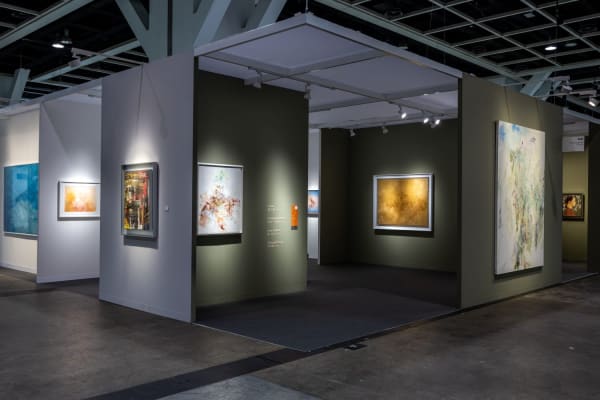
Booth 1C31 | Art Basel Hong Kong 2021
19 - 23 May 2021Kwai Fung Hin Art Gallery is delighted to participate in Art Basel Hong Kong 2021 . We will be presenting the works by Lalan (Xie...Read more -
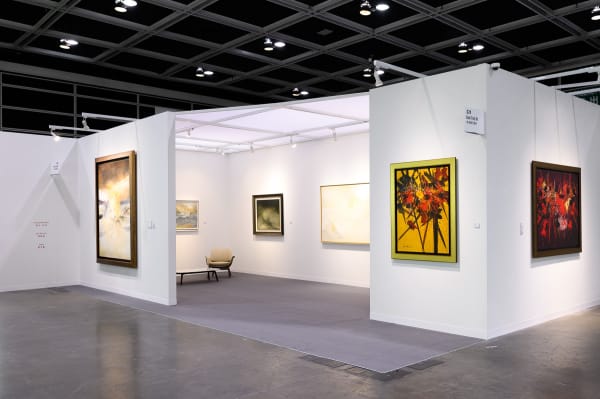
Booth C2 & S24 | Fine Art Asia 2020 & Hong Kong Spotlight by Art Basel
27 - 30 Nov 2020Kwai Fung Hin Art Gallery is delighted to announce our participation in both Fine Art Asia 2020 and Hong Kong Spotlight by Art Basel.Read more







